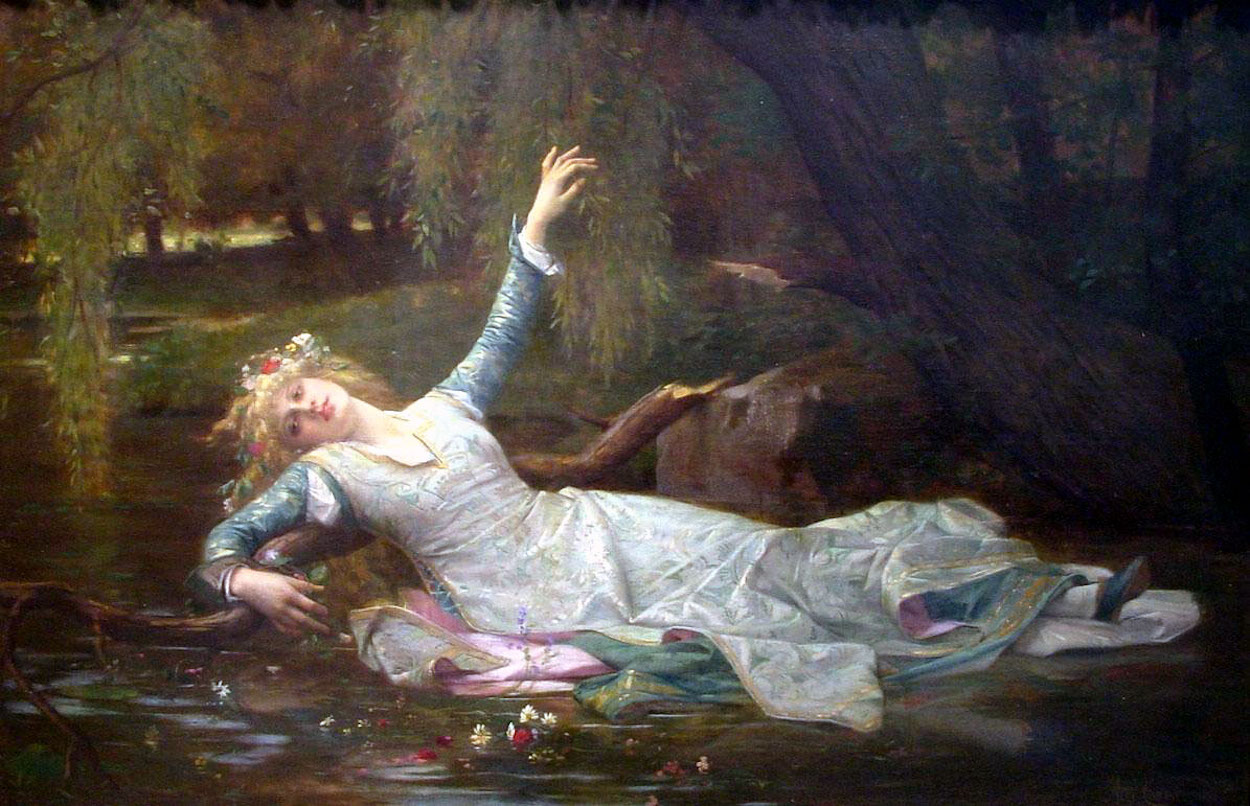Ophelia is a character in William Shakespeare's Hamlet, a young noblewoman of Denmark, the daughter of Polonius and sister of Laertes, and potential wife of Prince Hamlet. Ophelia is at first witness to Hamlet's growing disturbance, and then the recipient of his famous "Get thee to a nunnery" dismissal. Broken-hearted and grief-stricken for her father, who had been killed by Hamlet, Ophelia goes mad and climbs a willow tree next to a brook, singing a bit madly about flowers. When the branch she is on breaks, she falls into the stream and drowns.
Cabanel shows Ophelia slipping very gracefully from the broken limb of a crooked willow. She doesn't seem too perturbed by the fact that she is about to land in the water. Cabanel has given his Ophelia the look of a medieval princess. She is very blonde and pretty, and her flowers have already dropped into the brook.
Cabanel painted historical, classical, and religious subjects in the academic style. He was also well known as a portrait painter. According to Diccionario Enciclopedico Salvat, Cabanel is the best representative of L'art pompier (official, academic art) and Napoleon III's preferred painter., Cabanel did more than any other artist of his generation to form the character of belle époque French painting. His refusal (together with William-Adolphe Bouguereau) to allow Édouard Manet and others to exhibit in the Salon of 1863 led to the establishment of the Salon des Refusés , and the eventual acceptance of the Impressionists and "modern art” Cabanel won the Grande Médaille d'Honneur at the Salons of 1865, 1867, and 1878.
- Clinton
How well do you know Shakespeare? Check your knowledge of paintings with the heroes of his plays here!


 Alexandre Cabanel
Alexandre Cabanel